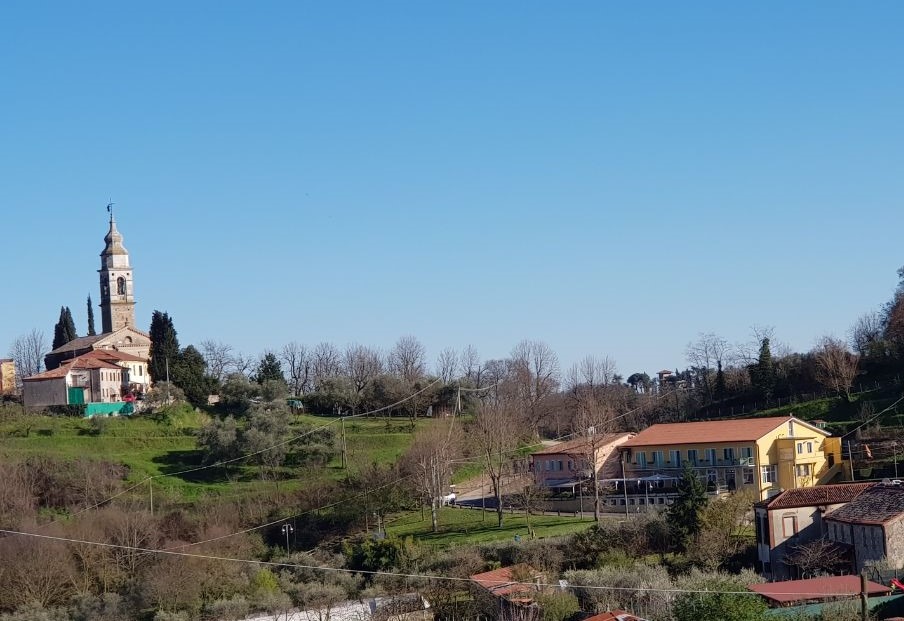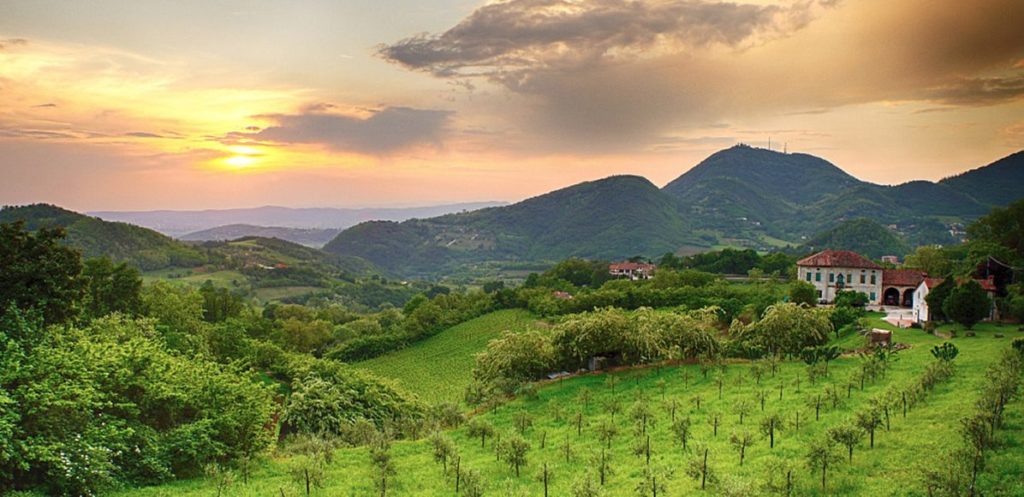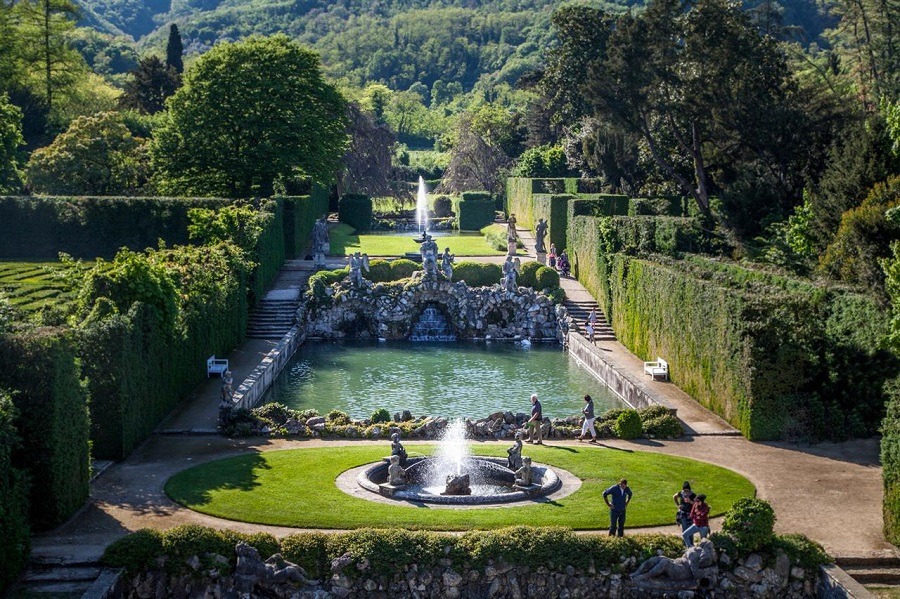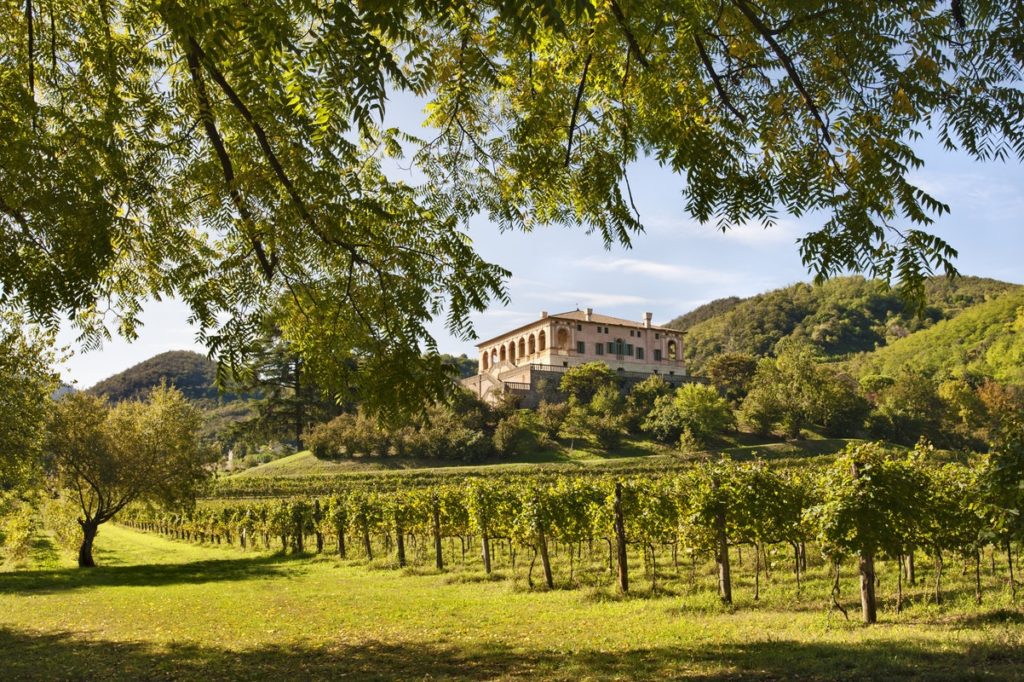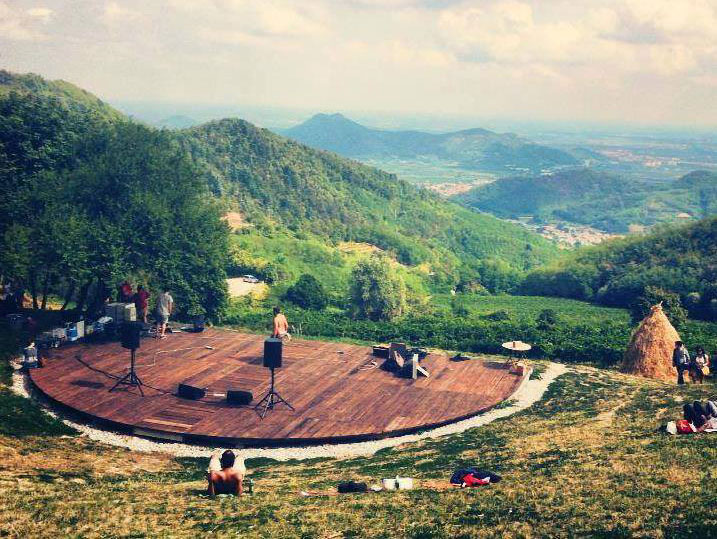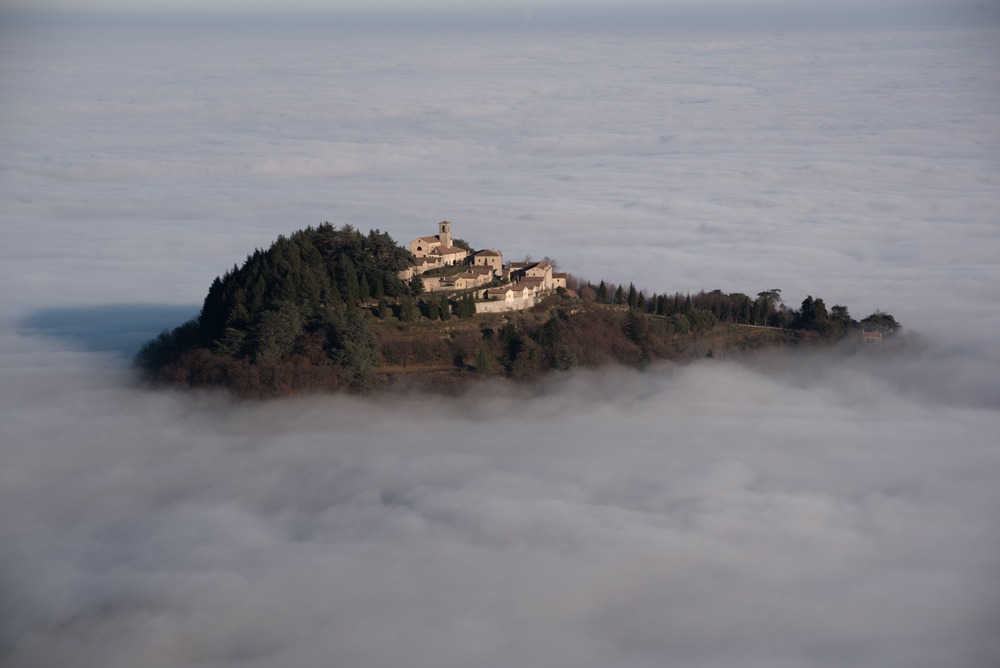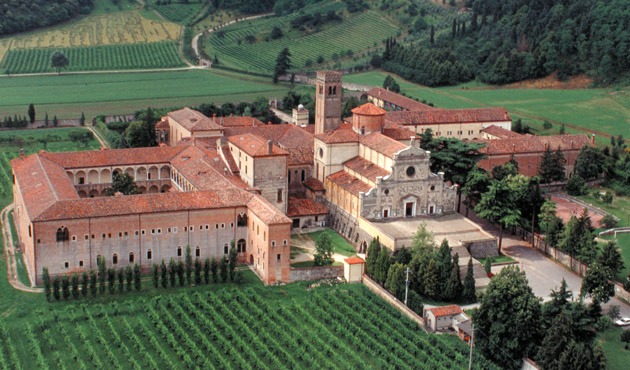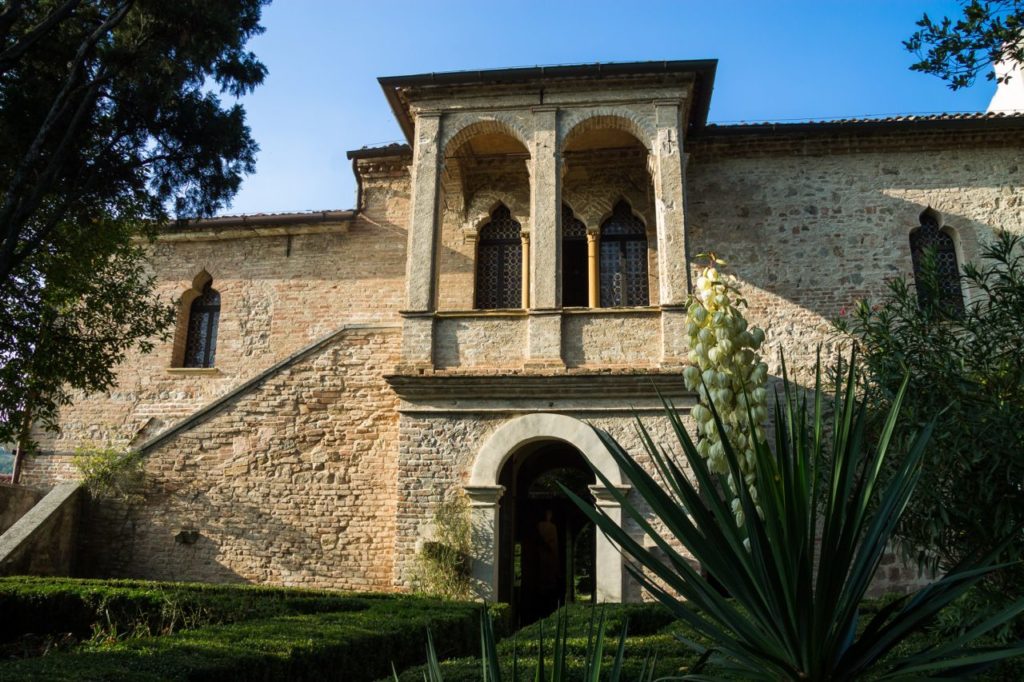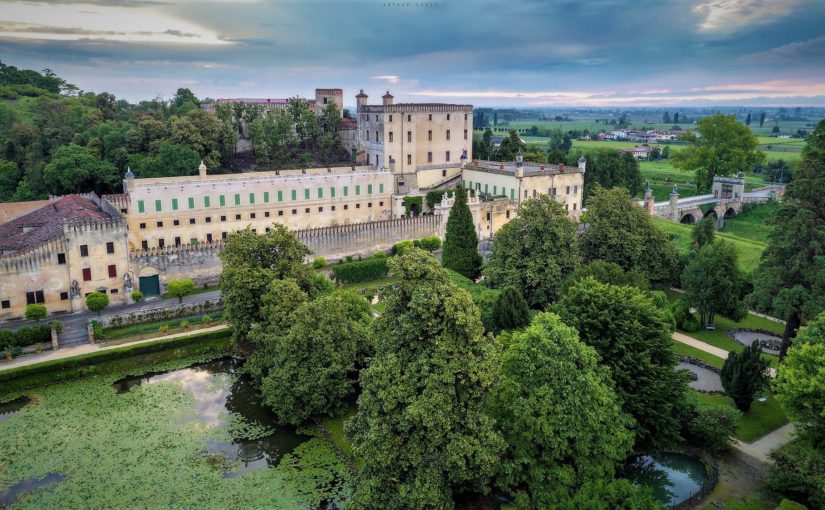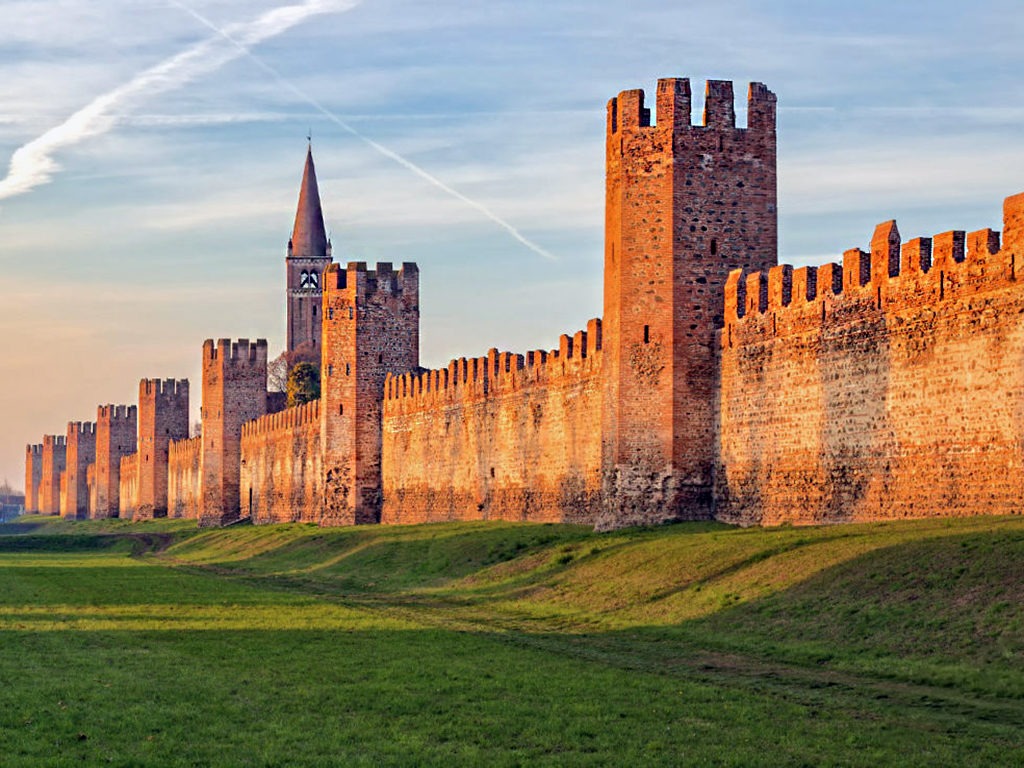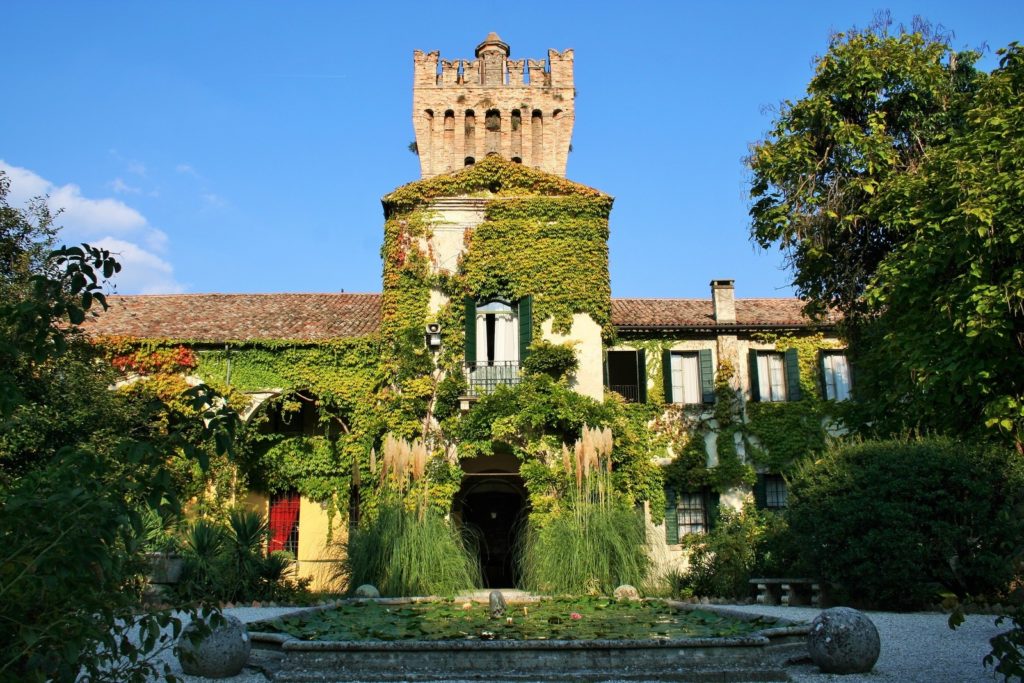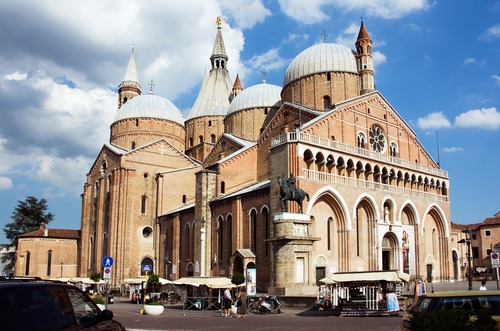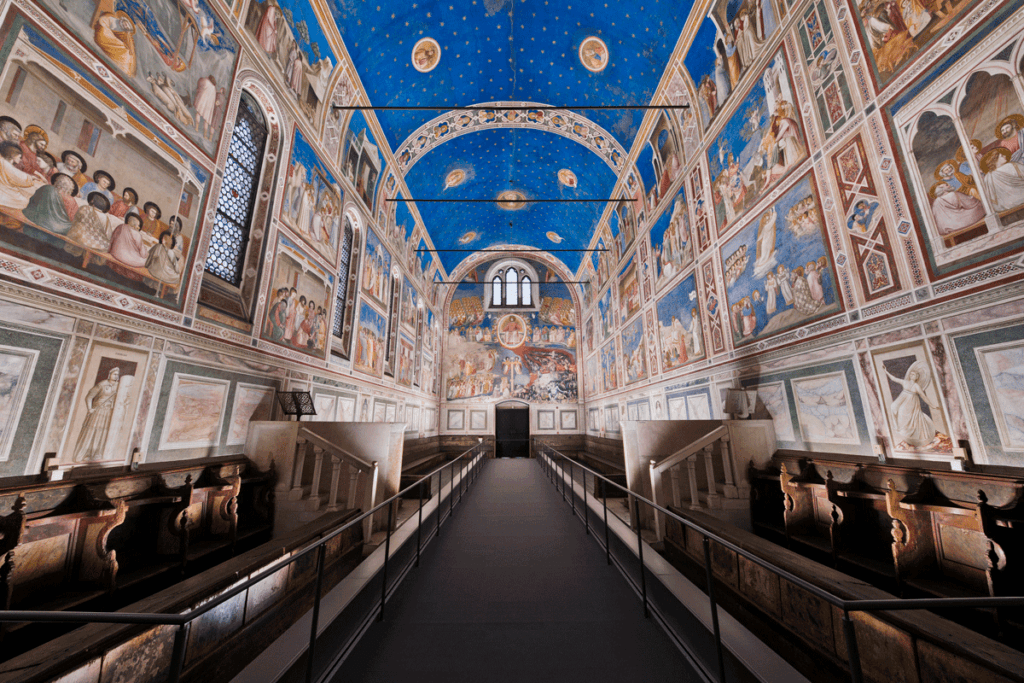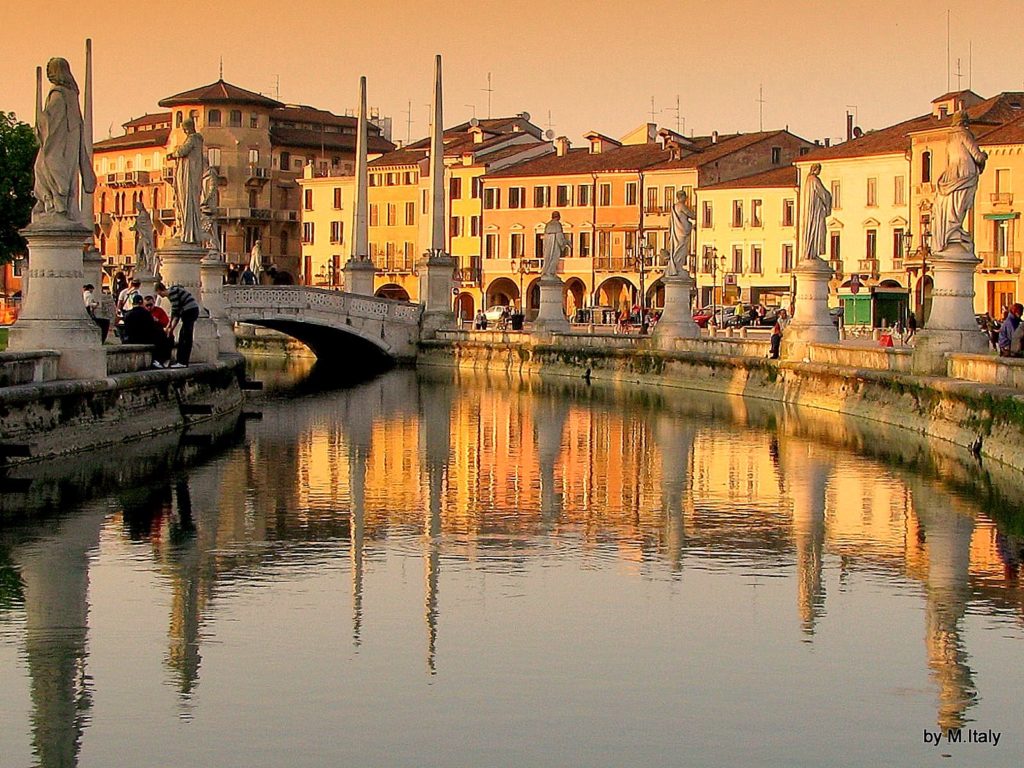Belvedere Resort ai Colli and Convivium ai Colli are located right in the heart of the Euganean Hills, a group of volcanic reliefs characterized by heterogeneous shapes and heights.
The territory of the Euganean Hills, with its 3000 years of history told through archaeological sites, museums and monuments, is the ideal destination for lovers of art and culture. Este cradle of the Paleoveneta civilization, Arquà Petrarca charming medieval village and scenic Monselice walled city, are among the most important historical centers. Do not miss the wonderful Venetian villas, such as Villa Vescovi in Torreglia and Villa Barbarigo right in Galzignano, and the evocative monasteries of Praglia and Rua, where time seems to have stopped to offer visitors moments of deep spiritual peace.
A dense network of trails and hiking trails allows you to explore the territory in a sustainable way: on foot, by bike or on horseback you can discover the most beautiful corners of the Euganean Hills immersing yourself in nature and practicing your favorite sport.
Villa Barbarigo-Pizzoni Ardemani is located in Valsanzibio right in Galzignano Terme.
The garden of Valsanzibio, built between 1665 and 1696, is an extraordinary example of an entirely legible symbolic garden, of a large water garden in complete efficiency and is today one of the world’s largest and most complete period gardens which won the first prize as ‘The most beautiful garden in Italy‘ in 2003 and the third most beautiful in Europe in 2007.
The charming Villa dei Vescovi is located in Luvigliano, in the municipality of Torreglia, and is one of the most beautiful and elegant villas of the Renaissance period in the whole Paduan territory.
The conception of the work was entrusted in the early 1500s to the nobleman Alvise Cornaro by the Bishop of Padua, who here identified the location for an intellectual circle gathered around the value of the landscape and its role of stimulus towards reflections and elevated thoughts, indispensable elements to govern well.
It was donated to the FAI by Maria Teresa Olcese Valoti and Pierpaolo Olcese, in 2005.
The amphitheater of Venda is an extraordinary vantage point located on the slopes of Mount Venda (603 meters), the highest of the Euganean Hills. In this pleasant place, at the edge of the forest covering the summit of the mountain and the underlying vineyards, a natural theater was set up in 2013. The place is very impressive, surrounded by lush vegetation at a height of over 500 meters above sea level. and on particularly clear days it is possible to see the Venice lagoon in the north-east direction against the background of the vast Venetian plain. The Venda amphitheater is the perfect location for theater and music performances and during the summer season many concerts and shows are organized.
The Hermitage of Santa Maria Annunziata is located on the top of Mount Rua (416 m s.l.m.) near the town of Torreglia, in the center of the Euganean Hills. As reported by some documents, its foundation is due to two hermits belonging to the community of St. Mattia of Murano who in 1339 obtained permission from the bishop of Padua to build the church in memory of the Madonna. Even today the Camaldolese friars live in the enclosed hermitage, but in particular periods of the year the monks willingly accept the visit of relatives and anyone who wishes to enjoy the peace of this fascinating place.
The Abbey of Praglia is located in the territory of the municipality of Teolo, at the foot of Mount Lonzina, and is undoubtedly the most important and evocative place of spirituality in the Euganean Hills area. It is a very ancient Benedictine monastery, founded in the eleventh century. The Abbey of Praglia, still inhabited today by Benedictine monks and the destination of constant religious tourism, also houses a National Monumental Library, which contains about 100,000 volumes. the laboratory of restoration of books and ancient codes is another flagship of the Abbey.
Petrarca’s House is one of the obligatory stops for those who want to visit the Euganean Hills. In 1369 Francesco Petrarca decided to move to the village of Arquà, perhaps because the place reminded him of the Tuscan landscape dear to him and here he spent his last years of life in total peace and tranquility. Currently on the first floor of the house there is a museum layout. On the ground floor, on the other hand, there is a photographic exhibition that illustrates the main stages of Petrarch’s life, the itineraries and stays spent in the Veneto region. Also worth visiting is the village of Arquà Petrarca, one of the most beautiful medieval villages in Italy.
Of the many walled cities of the Veneto region, Montagnana is the one that best preserves its medieval walls. The extraordinary fortification is due to the intervention of the Carraresi that in the mid-fourteenth century wanted to strengthen the defenses against the nearby Scaligeri of Verona. The new enclosure, built in bricks and trachyte of the Euganean Hills, enclosed an area of about 24 hectares, was crowned with Guelph merlons and had 24 perimeter towers about 18 meters high.
San Pelagio Castle is located in the municipality of Due Carrare. It is surrounded by a beautiful park where the beautiful English roses represent the strong point, in addition to the fascinating thermal bath dating back to the Roman period, found during a restoration work. Inside the castle the Air Museum was set up, which preserves numerous relics of the history of human flight, from Leonardo da Vinci‘s projects to the conquest of space in the last decades. The most important aeronautical collection in Europe is also present. The most important section of the museum is dedicated to Gabriele D’Annunzio, as the castle was the seat of the Serenissima Squadriglia commanded by the poet from Abruzzo, who left here on August 9, 1918 for his famous aerial venture on Vienna.
“Venice the beautiful, and Padua its sister“, recites a popular saying. The comparison with Venice should already make understand, to those who have never been in this city, what you will find during your visit. Giotto’s Scrovegni Chapel, the most important pictorial cycle in the world, would already be enough to justify a visit to Padua.
You can not forget the presence of the “Saint” as the Paduan call it: Sant’Antonio whose secular presence in the city is found not only in the relics preserved in the Basilica but also in the many sweets that bear his name.
The many city squares, in particular Piazza delle Erbe, della Frutta and dei Signori, betray the pleasure of Paduans for social life.
Paduans are proud of the grandeur of Prato della Valle (88620 square meters), a square which, according to its total extension, is second only to the Red Square of Moscow. Formed by a central island, completely green, around there is a channel of about 1.5 km in circumference, surrounded by a double row of numbered statues (78) of famous people of the past.
It rarely happens to visit a city and look for something to see in the local university. That of Padua, however, is an exception. Leon Battista Alberti, Galileo Galilei, Niccolò Copernico and many other personalities have passed since the 1222 in the Palazzo del Bo classrooms (it takes its name from an old butcher’s inn). There are two main legacies of 800 years of culture: the Anatomical Theater and the Chair of Galileo Galilei. The Theater, is an extraordinary walnut wood theater that allowed students to watch, from the top, autopsies on the bodies. In the Sala dei Quaranta, named so for the forty portraits of foreign students, there is the wooden chair from which Galileo taught mathematics and physics from 1592 to 1610.



